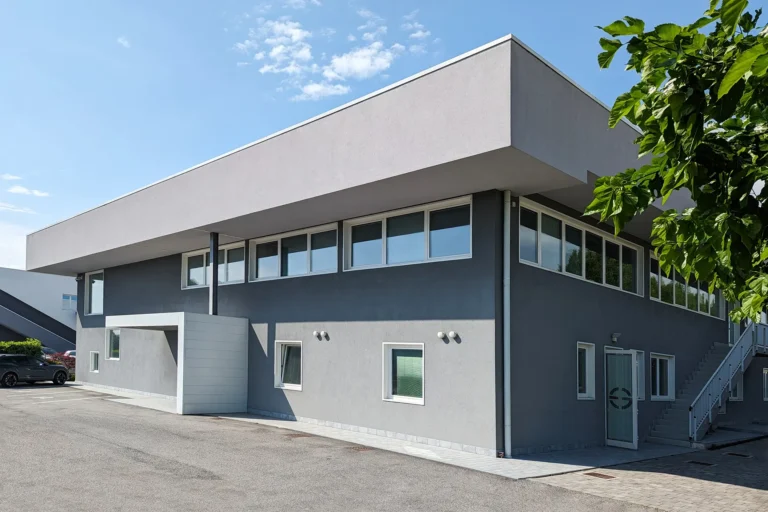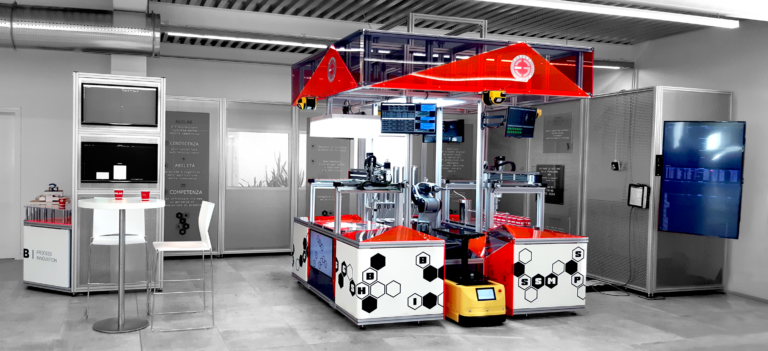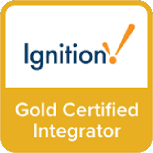Smart Building BMS
Tailor-made Building Management System solutions
Building Management Systems 4.0 for Entire Buildings, Floors, Areas, and Individual Spaces
Our Building Management System (BMS) solution is built on an open and scalable architecture, as we utilise readily available industrial devices globally for our Smart Buildings. While ideal for managing office buildings, our BMS systems seamlessly adapt to production facilities or other types of structures thanks to their highly customisable functionalities.
Even though completely tailored to specific needs, our Building Management Systems adhere to established methodologies and fully comply with the directives of the ISO 50001 international standard.
These are cloud-based solutions: reliability, user-friendliness, and availability on both fixed and mobile devices are ensured through a meticulously designed Web User Interface (Web GUI), carefully crafted for both aesthetics and user ergonomics.

Smart Building software solutions: consolidated, reliable, customised and fully integrated in your building
We have surpassed the limitations of home automation systems by successfully interconnecting various technologies and integrating all their functions into a single Building Management System:
- Leading HVAC brands
- Home automation buses (KNX, BACnet, Lonworks, MODBUS)
- Photovoltaic inverters
- Weather stations

Benefits of a BMS system
- Enhanced comfort within building spaces.
- Increasingly autonomous, high-performance, secure, and sustainable buildings.
- Smart Energy Management: energy efficiency.
- Speed and efficiency in daily building management operations: lighting, alarms, indoor temperature, etc.
As with every other industrial sector, the future of corporate buildings is also embracing Industry 4.0 innovation to optimise performance, enhance comfort, and reduce energy impact.
Core Features of our Smart Building solutions
- Lighting control
- Climate control and air exchange systems
- Indoor Positioning
- Access control and video surveillance
- Management of photovoltaic systems
- Real-time monitoring and energy efficiency analysis
- Living Comfort optimisation
- Management of Smart Data related to the building: reports, analytics, statistics
- Highly configurable, scalable architecture according to needs
- Web interface accessible from mobile devices
- Support for different user privilege levels, with actions configurable for each user group
The criteria of reliability, expandability, and customisation that have always distinguished the world of Industrial Automation are now also applied to our Building Management Systems (BMS)
Lighting control
Controlling the switching on and off of internal and external lights on different levels (building, floor, room, etc.) through the use of on-wall controls, presence sensors, time slots, twilight sensors, and a web GUI.
Presence control
Presence control for each room of the building is determined through one or more presence sensors mounted on the room walls, supported by temporal filters.
The detection of the presence of one or more individuals is utilised to support various functionalities:
- Presence visualisation;
- Intrusion control;
- Air recirculation optimisation;
- Light control;
- Climate control.
Access Management
Opening and closing control of driveway gates and access doors via wall control, Web GUI, time zone, badge, or personal code.
Each authorised user has a badge and personal code, which are used to enable access from VOIP intercoms with RFID readers.
Intruder control
Control can be activated for days and times that can be set for the entire building or for specific rooms.
When the control is active, any presence in the building triggers an acoustic or light signal inside and outside the building and switches on all interior lights. Enabling this functionality and its settings are available in a special section of the user interface.
The intrusion can be notified by SMS, an instant messaging service, or email.
Motorised windows
Control of window opening and closing on different levels (room, floor, building, etc.) through the use of on-wall or Web GUI controls.
Videosurveillance
The system can be integrated with the most popular IP video surveillance systems (Axis, D-Link).
Bathroom ventilation
The bathroom extractor fans are switched on automatically when a presence is detected in the room and are switched off after a time that can be set for each individual extractor fan.
Solar/Photovoltaic plant monitoring
Through the connection to a photovoltaic inverter, operating status and power production data are acquired.
The data is displayed in real time in numerical format and as a real-time trend within a special section of the user control interface (Web GUI).
Air-conditioning control
Heating and cooling of rooms through control from the Web GUI of network-connected indoor units located throughout the building.
Specific functions:
- Read ambient temperature detected, status, operating mode, fan setting, and deflector setting.
- Turn on/off.
- Set the setpoint temperature.
- Set operating mode: heating, cooling, ventilation only, dehumidification, automatic.
- Set fan speed to low, medium, high, very high, or automatic.
- Set the deflector angle of the air outlet.
Through the user interface, it’s possible to turn off all units for a floor or building and predefine their operating mode, such as timed or weekly automatic on/off.
An available automatic ON/OFF climate mode is linked to timed presence control in the rooms.
By interacting with the Web Weather Forecast and indoor and outdoor environmental sensors, the system can automatically adjust climate control to optimise environmental comfort.
Air Recirculation
For each individual unit in the Web GUI, the following can be controlled:
- Turn on and off
- Seasonal operating mode (summer or winter)
- Operating mode (automatic, ventilation only, filter cleaning)
- Operating status and any lock
For each individual unit from the Web GUI, a timed or weekly on/off mode can be defined, linked to the presence in the rooms for break and work times depending on the air volumes of the rooms. This way, an automatic air exchange is achieved, adjusted to the room volume and the number of people present inside.
Detection of indoor/outdoor environment conditions
Temperature, humidity, and pressure data (internal and external), wind speed and direction, and precipitation are acquired through the connection with sensing probes.
The data are displayed in real time in numerical format and as a real-time trend within a special section of the user control interface (Web GUI).
Event Registration
Recording of all events:
- Button presses (on the wall or on the Web GUI)
- Opening/closing accesses
- Turning on/off internal air conditioning units
- Turning on/off air exchange
- Turning on/off bathroom exhaust fans
- Turning on/off lights
- Operation of the intrusion control system
- Opening/closing windows
- …
Option for integration with Syslog Server.
Data Historian
Historical storage on the database server for up to 36 months of values relating to energy consumption and production and environmental conditions for posthumous analysis.
Data Analyzer
A tool that processes the system’s historical data and recorded events to perform daily, weekly, monthly, seasonal, and annual thermal analyses.
Tailor-made Smart Building Systems
Interconnected buildings that are autonomous, high-performance, safe and environmentally sustainable
Our solutions are consistently tailored to meet the unique needs of businesses. We don’t believe in a ‘one-size-fits-all’ approach, as we understand that each company possesses its own distinctive production intricacies that define its individuality.
If you're looking to bring innovation to your company while preserving your established production methods, we're here to assist you
Thanks to our vast experience in the field of automation, we apply skills developed in different industries to carefully study the customised solution that best suits your business needs. First, we will thoroughly analyse your production processes, from the Automation level up to Management, to fully understand your business dynamics and start developing a tailor-made solution that integrates seamlessly with your existing workflows, methods and technologies.





